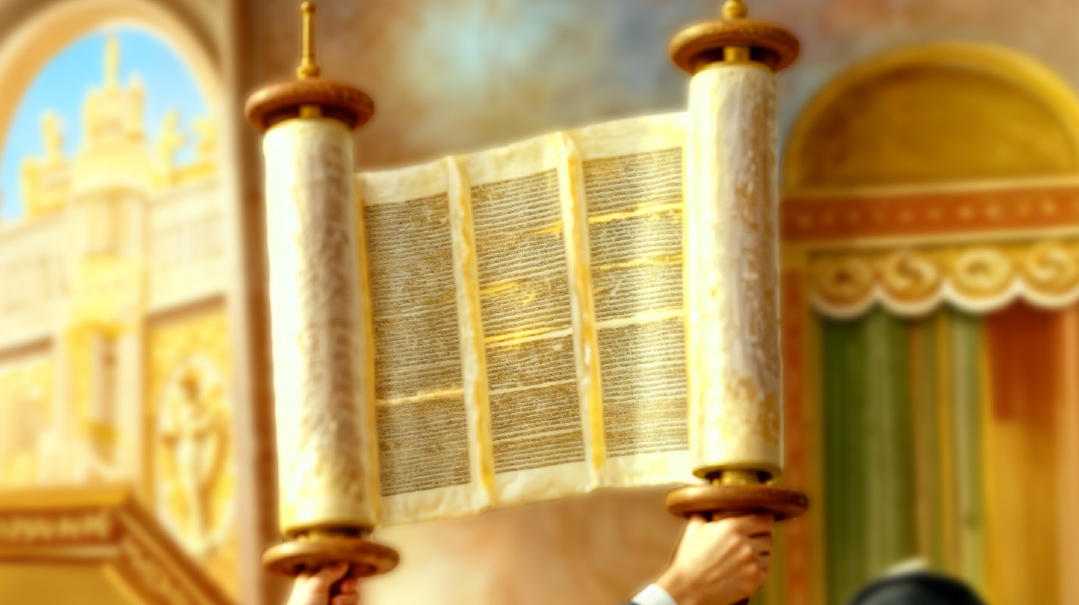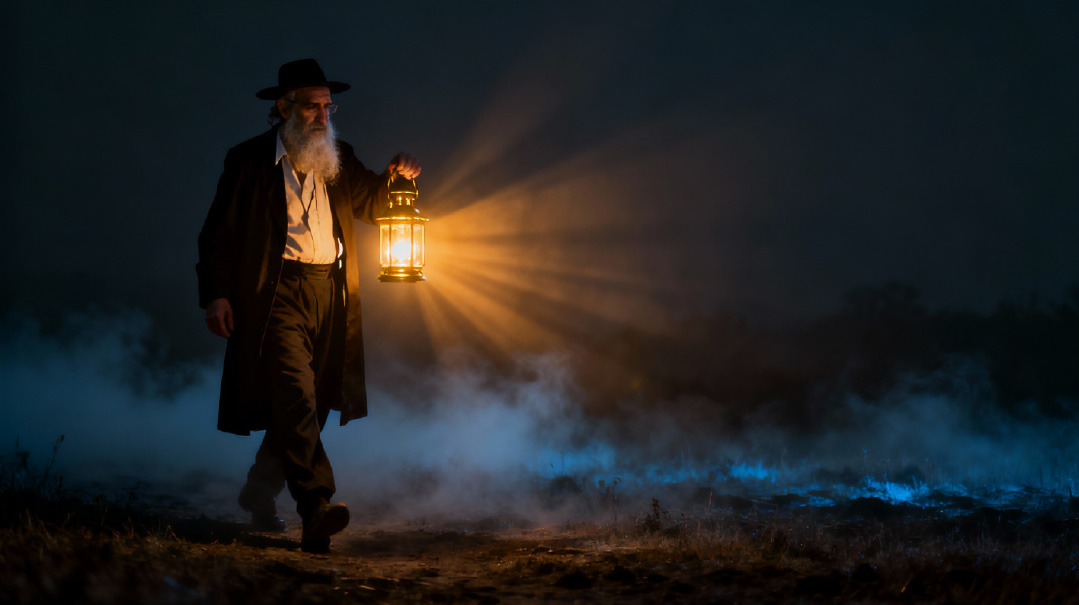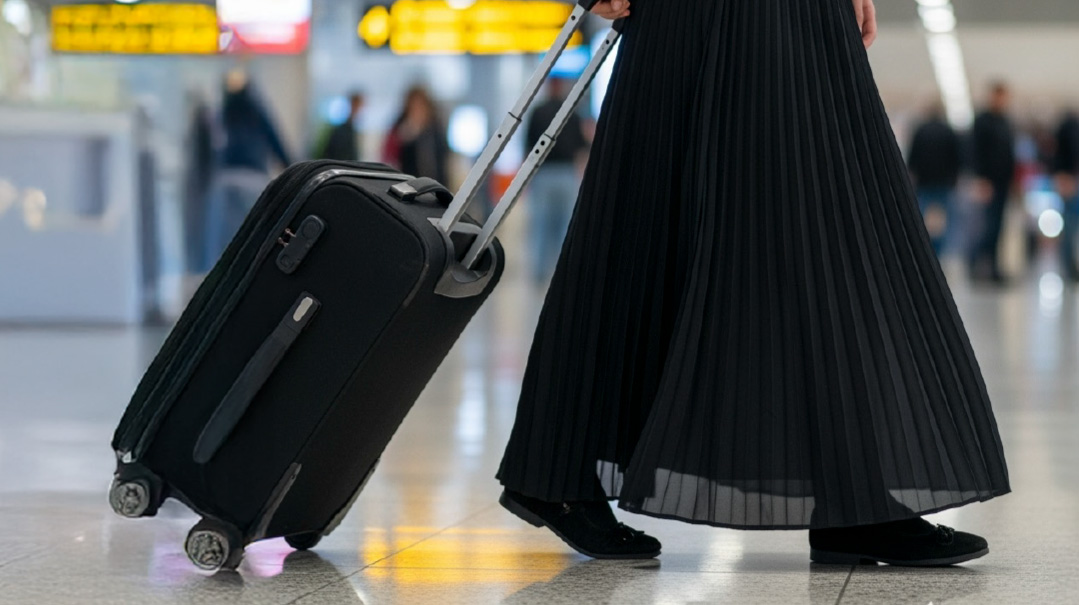The Gift of Torah
| May 27, 2025The spiritual gift we can all carry away from the beautiful Yom Tov of Shavuos

This dialogue reflects quite a few real conversations I’ve had about the spiritual gift we can all carry away from the beautiful Yom Tov of Shavuos.
I know our avodah on Shavuos is kabbalas haTorah — accepting the Torah anew. But what does that mean practically? All year I try my best to learn and keep Torah better. Shavuos must be asking me to do something more. What is that?
To look for answers about Shavuos, we need to turn back the calendar to Pesach. The Ramban (Vayikra 23:36) teaches that Pesach, Sefiras Ha’omer, and Shavuos actually form one long Yom Tov. The “first days” are Pesach, “Chol Hamoed” is Sefiras Ha’omer, and the “second days” are Shavuos. So to understand our job on Shavuos, we first need to understand Pesach.
The Haggadah describes the personal role Hashem played in Yetzias Mitzrayim. “Ani v’lo malach” — not through any agent; He Himself, “bichvodo uv’atzmo,” led us out. But countless times throughout history, Hashem has rescued us through agents. Why step in personally here?
Because of His “personal interest” in Yetzias Mitzrayim. As Chazal teach, Yetzias Mitzrayim was the birth process of Klal Yisrael as a nation.
Why did He create Klal Yisrael? In parshas Tetzaveh (Shemos 29:46), we read: “I am Hashem, their G-d, Who took them out of Egypt l’shachni b’socham — to dwell in their midst.” Hashem wanted a dwelling place for His Shechinah in the physical world, and He created Klal Yisrael to serve as His vessel.
So what does Pesach have to do with Shavuos?
To answer that question, I’ll ask another. If we left Mitzrayim during the day, why do we celebrate our freedom at night, on Leil HaSeder?
Yetzias Mitzrayim wasn’t just about the physical exodus. It was an identity transformation. Hashem activated our true essence as Jews — our oneness with Him.
That identity shift began on Seder night, when Hashem revealed His presence in Egypt. The Egyptian firstborns, ordinary humans, couldn’t contain that revelation, and perished. But we Jews stayed healthy and whole. We weren’t recipients of Hashem’s revelation — we were part of it.
On Pesach, we gained the spiritual ability to contain and reflect Hashem’s presence. But we weren’t set up to actually accomplish the job.
That’s what we gained on Shavuos, with Kabbalas HaTorah. Torah is the “binding agent” that attaches us to Hashem and enables us to reflect His holiness.
According to the Bach (Orach Chayim 47), this is the purpose behind Kabbalas HaTorah. We received the Torah so we could do this work of attaching ourselves to Hashem, embodying His holiness, and radiating it outward.
The Bach sources this in birchos haTorah: “Asher bachar banu mikol ha’amim….” Every day, before any Torah study, we remind ourselves that Hashem chose us from among all other nations to represent Him in His world. According to the Bach, every Jew must have this intent as he learns and fulfills the Torah.
The Bach reminds us how the 613 mitzvos of the Torah correspond to the 613 “limbs and sinews” of man. There’s a reason for this. When a person and the Torah unite, that person becomes a living embodiment of Hashem’s Shechinah.
This is starting to sound lofty.
Before you decide that, listen to one more piece from the Bach. Hashem didn’t just obligate us in His Torah and wish us luck. He “gave it to us as a gift, so we wouldn’t forget it.”
Rav Wolbe teaches something fascinating about the “gift of Torah”: We aren’t simply talking about a gift of guidance and information. At Matan Torah, Hashem implanted within each and every one of us a higher nature fully aligned with Torah.
Most of us know our lower self much better than our higher self. Our lower self is normal, human; it wants comfort, pleasure, easy living. Our higher self — the gift we received at Sinai — is our more elevated, spiritual side that deeply desires Torah, mitzvos, and closeness to Hashem.
Our lower self takes up a lot more brain-space than our higher one. But our higher self is alive and well inside us. As the Torah teaches, “Ki karov eilecha hadavar me’od, b’ficha u’bilvavecha, la’asoso.” Living fully aligned with Torah isn’t “far away” from us. It’s accessible and doable — for all of us.
How do I go about doing it?
Lots of us look at Torah and mitzvos as things we need to do. We work hard to do them right, with kavanah and hiddurim. But there’s doing, and then there’s being. Doing happens within our external actions and choices. Being is about who we are inside.
Here’s an example — brachos. It isn’t easy to make proper, focused brachos when we’re hungry and the food looks tantalizing.
We need to work on this, but beyond changing how we make the brachah, we can change who we are in relation to brachos. In the Shabbos zemer Kol Mekadesh, we sing, “So’adim bo l’varech shalosh pe’amim — We feast three times for the purpose of making brachos.”
The Torah wants us to become people who truly see food as a mere vehicle for blessing Hashem, more than we desire the food in front of us.
We can stay in our lower selves and still check all the boxes of our Torah obligations. And we’ll deserve a lot of credit. But when we do the work to move into our higher selves — when we develop ourselves so our internal makeup aligns more with Torah — that’s when we become vessels for the Shechinah.
When Rav Yerucham Levovitz walked into a town, the gentile peasants would stand up out of respect.
Why? They didn’t know anything about him. But Rav Yerucham was a person who had aligned his inner self so much with Torah, risen so fully into his higher nature, that holiness radiated from him. Even the ignorant peasants could sense he was exalted.
But I’m a regular Yid. Rav Yerucham Levovitz’s greatness is far beyond me.
It’s true — we aren’t Rav Yerucham, and we likely never will be. But this isn’t all-or-nothing. We don’t need to become Rav Yerucham. We have our own version to work toward.
So how do I go about making these kinds of inner shifts? Do I try to ignore my lower self? Do I keep reviewing the thoughts and feelings I’m supposed to have until they somehow sink in?
Well, as most of us know from experience, real inner change doesn’t come from shutting ourselves down, or from harping on supposed-tos.
The first step needs to be listening. Listening nonjudgmentally to our lower selves’ complaints and objections. Only then will it be ready to hear us as we try to change its mind. Let’s imagine the conversation using our brachos example:
Lower self: Let’s get the brachah over with so we can eat!
Higher self: I know, the food looks delicious — but did you ever consider that a brachah could be delicious, too?
Lower self: Eh. I can’t even imagine feeling that way.
Higher self: A brachah can be a special moment of connection, to enjoy Hashem’s love and tap into His abundance.
Lower self: Sounds nice, but I want the food!
Higher self: That’s okay. But think about it, and remember — brachah pleasure lasts longer than food pleasure. That special, connected feeling will stay with you, enhancing your life in a real way.
Lower self: Hm. Okay, let’s try it.
This sounds like something I can try.
That’s right! The ideas we’ve discussed here can seem lofty. But remember what Rav Wolbe said. This higher self, whose feelings and desires are perfectly aligned with Torah, already exists within us. It was gifted to us on Har Sinai.
Shavuos isn’t just a time to celebrate the Torah. It’s a time to remember the purpose for which Hashem gave it to us. So we can fulfill our mission as earthly vessels for His presence. So we can attach ourselves to Him, embody His Shechinah, and reflect it outward into the world.
This Shavuos, let’s work on shifting a bit from lower-self living to higher-self living. Let’s work on becoming those vessels — vessels more capable than they were last year of truly being mekabel the Torah. —
Rabbi Levi Lebovits is the director of the Vaad Project, an initiative to help Jews worldwide find joy, meaning, and fulfillment in their Judaism. He has studied for over 20 years under Rav Reuven Leuchter, and has authored step-by-step guides on teshuvah and the Haggadah.
(Originally featured in Mishpacha, Issue 1063)
Oops! We could not locate your form.







